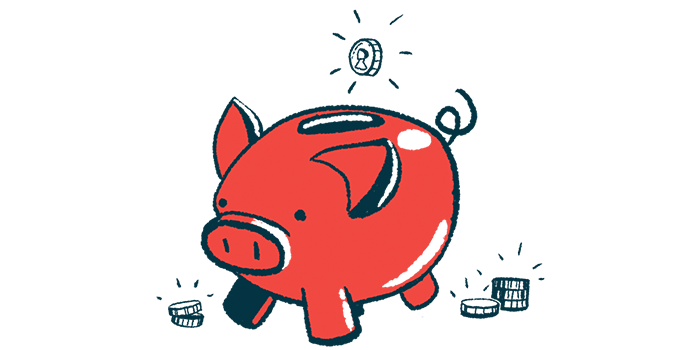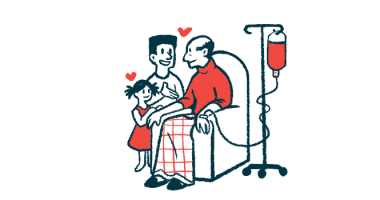Hemophilia B Patients in China Fare Worse Than Those With Type A

Hemophilia B patients living in urban mainland China have longer hospitalizations and significantly higher medical costs — including more expensive fees for coagulation factors concentrates — compared with patients with hemophilia A, a retrospective study shows.
In fact, people with hemophilia B had inpatient medical costs more than 40% higher than those with hemophilia A. Their hospital stays were a median of two days longer, as well.
These findings highlight the need for better treatment management, and for tailoring medical insurance schemes according to specific hemophilia types, according to researchers.
“We can infer from our results that there was a suboptimal use of coagulation factor concentrates, with the subsequent higher medical cost and hospital utilization for hemophilia patients, which was especially critical for those with hemophilia B, imposing a cost on the health system as well as individual hemophilia patients,” they wrote.
The study, “Medical costs and hospital utilization for hemophilia A and B urban inpatients in China: a national cross-sectional study,” was published in the journal BMC Health Services Research.
People with hemophilia A and B lack specific blood clotting factors, which are proteins that help form blood clots to prevent excessive bleeding. While factor VIII (FVIII) is missing or is defective in people with type A, factor IX (FIX) levels are reduced in those with type B.
Treatment with concentrated FVIII and FIX remains the mainstay option for managing hemophilia in many countries. In China, both plasma-derived and recombinant (lab-made) clotting products are popular, although recombinant products are more costly.
On the mainland, efforts to enhance access to medical care and medications led to the establishment, in 2004, of the Hemophilia Treatment Center Collaborative Network of China (HTCCNC). Moreover, the country has expanded the number of blood clotting therapies included in medical insurance schemes.
Yet, despite these efforts, access to care in China still lags behind that of developed countries.
Now, a team led by researchers at the Beijing University of Chinese Medicine and their colleagues evaluated whether medical costs and hospitalizations differ between patients with hemophilia A and hemophilia B in urban China. They also assessed whether the use of coagulation factor concentrates in hemophilia A and B patients was optimal from a third payer perspective.
To that end, they conducted a retrospective analysis of nationwide data collected from 2010 to 2016 related to hemophilia inpatients randomly selected from claims of the China Urban Employees’ Basic Medical Insurance (UEBMI) and Urban Residents’ Basic Medical Insurance (URBMI).
Both insurance schemes cover 95% of urban residents. While the UEBMI covers the medical costs of urban workers, the URBMI covers unemployed and retired people, as well as children, the elderly, and students.
In total, the analysis focused on a sample of 487 inpatients, of which 407 (83.57%) had hemophilia A and 80 (16.43%) hemophilia B. Patients with type A were significantly younger than those with type B (mean age of 36.42 vs. 41.48 years).
When reviewing direct medical costs and hospital utilization, researchers found that type B patients had significantly higher costs with hospitalization expenses than those with type A — specifically, median costs of RMB 19,347.76 versus RMB 8140.78, or in U.S. dollars, a median of $2,912.81 versus $1,225.60.
Also, compared with those with hemophilia A, patients with type B had significantly longer hospital stays (a median of seven days vs. nine days).
The total costs with coagulation factors were markedly higher for hemophilia B patients than for those with hemophilia A (median of $1,073.12 vs. $157.63). No statistically significant differences were seen in non-pharmacy costs and the number of hospitalizations between the two groups of patients.
Further statistical analyses showed inpatient medical costs were 41.7% lower for hemophilia A compared with those seen in hemophilia B, after adjusting for several confounding factors, such as age, number of hospitalizations, length of stay, region, and insurance type.
Plasma-derived FVIII therapies were used by 63.1% of hemophilia A patients and 52.1% of hemophilia B patients, followed by recombinant FVIII (31.2% of type A and 36.4% of type B patients).
Prothrombin complex concentrates or PCCs, a plasma-derived concentrate of coagulation factors, were used by 11.5% of type B patients and 5.7% of type A patients.
“We found that recombinant and plasma-derived FVIII concentrates, which should not be prescribed to hemophilia B patients, were broadly used among patients with hemophilia B,” the researchers wrote, adding that “wastage of FVIII concentrates and suboptimal prescription of coagulation factor concentrates … might account for the additional coagulation factor cost [borne] by hemophilia B inpatients to some extent.”
Overall, these findings show that urban patients with type B living in mainland China “experienced significantly higher inpatient cost, coagulation factor cost and longer length of hospital stay than patients with hemophilia A,” the researchers wrote.
“Our results suggest that additional progress in the management of hemophilia in China is required and physicians managing hemophilia patients should adhere to the current World Federation of Hemophilia (WFH) guidelines and best hemophilia practice,” they concluded.







